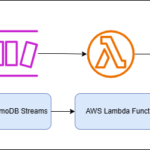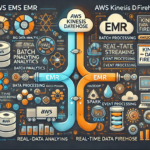In the world of data processing, two primary methodologies dominate the landscape: batch processing and real-time processing. Both approaches have their unique strengths, weaknesses, and use cases. Understanding the differences between them is crucial for businesses and data professionals to make informed decisions about how to handle their data effectively.
In this blog, we’ll dive deep into the concepts of batch and real-time data processing, explore their key differences, and discuss when to use each approach.
What is Batch Data Processing?
Batch data processing is a method where data is collected, stored, and processed in groups (or “batches”) at scheduled intervals. This approach is often used when dealing with large volumes of data that don’t require immediate action or analysis.
Key Characteristics of Batch Processing:
- Scheduled Execution: Data is processed at predefined intervals (e.g., hourly, daily, or weekly).
- High Volume: Ideal for handling large datasets that don’t need real-time insights.
- Resource Efficiency: Batch processing can be optimized to run during off-peak hours, reducing the strain on system resources.
- Latency: There is a delay between data collection and processing, as the system waits for the batch to be complete.
- Use Cases: Payroll processing, billing systems, end-of-day reports, and ETL (Extract, Transform, Load) operations.
Advantages of Batch Processing:
- Cost-Effective: Efficient use of computing resources by processing data in bulk.
- Simpler Implementation: Easier to design and manage compared to real-time systems.
- Scalability: Well-suited for large-scale data processing tasks.
Disadvantages of Batch Processing:
- Delayed Insights: Not suitable for scenarios requiring immediate action or real-time analytics.
- Limited Flexibility: Changes to the data or processing logic may require reprocessing the entire batch.
What is Real-Time Data Processing?
Real-time data processing, as the name suggests, involves processing data as soon as it is generated or received. This approach is critical for applications where immediate insights or actions are required.
Key Characteristics of Real-Time Processing:
- Instantaneous Processing: Data is processed in milliseconds or seconds.
- Continuous Flow: Data is handled in a stream, with no significant delays.
- Low Latency: Minimal delay between data generation and processing.
- Use Cases: Fraud detection, live dashboards, IoT sensor monitoring, stock trading, and recommendation engines.
Advantages of Real-Time Processing:
- Immediate Insights: Enables quick decision-making and actionable insights.
- Enhanced User Experience: Powers real-time applications like live notifications and personalized recommendations.
- Proactive Monitoring: Ideal for detecting and responding to anomalies or critical events as they happen.
Disadvantages of Real-Time Processing:
- Higher Costs: Requires more computational resources and infrastructure.
- Complexity: More challenging to design, implement, and maintain compared to batch systems.
- Scalability Challenges: Handling high-velocity data streams can be resource-intensive.
Key Differences Between Batch and Real-Time Processing
| Feature | Batch Processing | Real-Time Processing |
|---|---|---|
| Data Handling | Processes data in groups (batches). | Processes data as it arrives (streams). |
| Latency | High latency (delayed processing). | Low latency (immediate processing). |
| Resource Usage | Efficient for large volumes. | Resource-intensive due to continuous flow. |
| Complexity | Simpler to implement. | More complex to design and maintain. |
| Use Cases | Payroll, billing, end-of-day reports. | Fraud detection, IoT, live dashboards. |
| Cost | Cost-effective for bulk processing. | Higher operational costs. |
When to Use Batch Processing vs. Real-Time Processing
Use Batch Processing When:
- Data Volume is High: You’re dealing with large datasets that don’t require immediate analysis.
- Cost Efficiency is a Priority: You want to optimize resource usage and reduce operational costs.
- Delayed Insights are Acceptable: The use case doesn’t require real-time decision-making (e.g., historical reporting).
Use Real-Time Processing When:
- Immediate Action is Required: You need to respond to events or anomalies as they occur (e.g., fraud detection).
- User Experience is Critical: Real-time interactions are essential (e.g., live recommendations or notifications).
- Data is Time-Sensitive: The value of the data diminishes quickly over time (e.g., stock market data).
Hybrid Approach: Combining Batch and Real-Time Processing
In many modern data architectures, businesses leverage a hybrid approach to combine the strengths of both batch and real-time processing. For example:
- Lambda Architecture: Processes data in both batch and real-time layers, combining the results for comprehensive insights.
- Kappa Architecture: Focuses on stream processing but uses replayable data streams to handle batch-like tasks.
This hybrid approach allows organizations to balance cost, complexity, and the need for real-time insights.
Real-World Examples
Batch Processing in Action:
- Retail: Generating daily sales reports to analyze trends and inventory levels.
- Banking: Processing end-of-day transactions to update account balances.
Real-Time Processing in Action:
- E-commerce: Providing live product recommendations based on user behavior.
- Healthcare: Monitoring patient vitals in real-time to detect emergencies.
Conclusion
Both batch and real-time data processing play vital roles in modern data ecosystems. The choice between them depends on the specific requirements of your use case, including the need for speed, cost considerations, and the nature of the data being processed.
- Batch processing is ideal for handling large volumes of data efficiently, where immediate insights are not critical.
- Real-time processing is essential for applications requiring instant analysis and action, such as fraud detection or live monitoring.
By understanding the strengths and limitations of each approach, businesses can design data processing systems that align with their goals and deliver maximum value. In some cases, a hybrid approach may offer the best of both worlds, enabling organizations to harness the power of real-time insights while maintaining the efficiency of batch processing.


